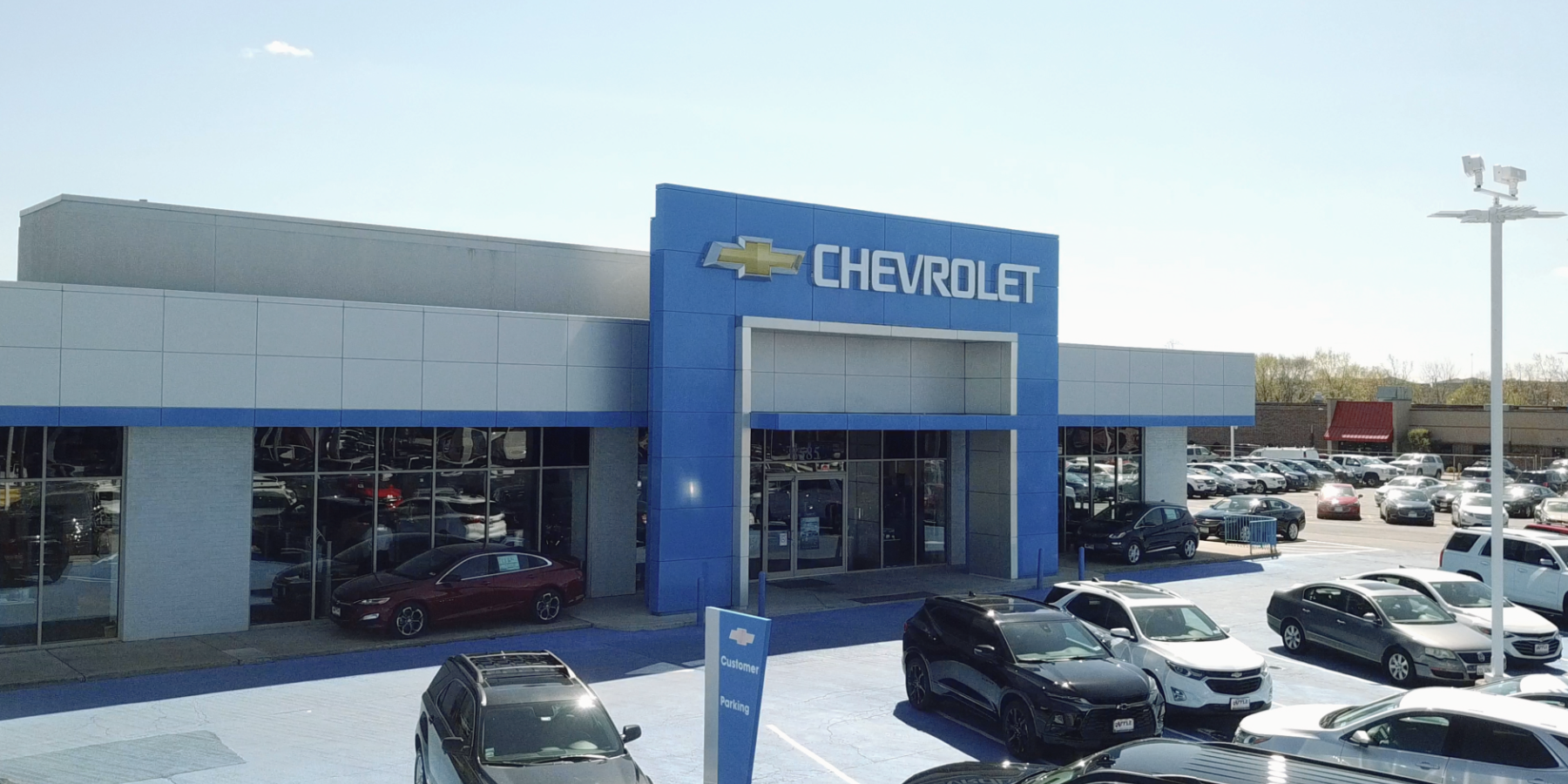GM encourages dealers to revamp outdated showrooms
Robert Snell / The Detroit News
Farmington Hills — General Motors Co. has launched the first phase of a costly and dramatic dealership overhaul that will transform aging showrooms nationwide.
Dealers who have weathered falling sales, a credit crunch, bankruptcy and, in some cases, GM’s attempt to close them down are being encouraged to obtain financing and spend hundreds of thousands of dollars, millions in some cases, on facility upgrades.
But GM is offering potentially lucrative incentives that could offset the expense.
The revamp comes after GM decided last year to trim its dealer ranks by about 2,000 and create a uniform look for surviving showrooms to reflect a resurgent company to display some new vehicles that have drawn critical praise.
GM’s financial problems, questions over long-term viability and sliding sales in recent years have forced some dealers to cut costs and delay renovations, leaving salespeople to peddle vehicles in some showrooms that scream Chevy Nova, not Chevy Equinox.
Starting with metropolitan locations, the program will span three years with the most outdated showrooms being targeted in the first of three phases.
“We want to show the public that there is something new here,” Jennifer Costabile, Buick GMC general sales manager, said recently while touring the revamped and expanded Sellers Buick Pontiac GMC dealership in Farmington Hills.
Analysts, however, question whether the investment will make a dent in sales and profits. GM’s sales in the U.S. dropped 30 percent last year, and its U.S. market share fell to 19.8 percent from 22.2 percent in 2008, according to Autodata Corp., though they rebounded in January.
Financing is more readily available than last year and in 2008, but banks are only willing to loan to profitable dealerships, said Jeremy Anwyl, chief executive officer of consumer guide Edmunds.com.
“There may or may not be a willingness to invest if profits are hard to come by,” he said.
GM has employed an architectural firm to assess needs and help craft a list of recommended improvements.
The improvements are encouraged, not mandatory, but GM will pay dealers cash incentives as long as project improvement targets are met.
GM is paying more attention to intangible attributes of a dealership, which can impact vehicle sales, said Cadillac General Manager Bryan Nesbitt.
The ambience in a Cadillac dealership — from the music playing to the sales approach — should feel different than in a Buick GMC or Chevrolet showroom, he said.
“We need to cater to (a customer’s) senses,” Nesbitt said. “It’s certainly a different customer and they have different expectations. I’m looking at all interfaces and what the customer might experience. All our senses end up judging something.”
Farmington Hills dealer Sam Slaughter judged that his 32-year-old facility needed a complete expansion and renovation. He launched a 9,000-square-foot expansion and spent $1.7 million building a new showroom, adding a customer lounge with flat-screen TVs, a cafe and expanded service area.
Slaughter also created a business development center to contact customers, send e-mails and letters to potential buyers and a conference room displaying competitors’ ads and a wall of new ideas.
Though Slaughter stuck close to recommended guidelines for design, there was flexibility to tailor the space to his own preferences, he said.
The dealership and service area are bright, clean, airy and inviting.
“Warm tones, like Nordstrom. Premium, but not over the top,” Costabile said. “It makes the vehicles front and center, and look great.”
A symbol of change
Slaughter broke ground in July 2008, before GM launched the dealership renovation program, at arguably the worst time as sales collapsed, consumer credit disappeared and GM teetered on the brink of bankruptcy.
“It’s been a positive in a tough economy. You might question our sanity, but it’s a symbol to our customers and employees,” Slaughter said during a recent tour. “To shock your customers when they walk in and say ‘what happened? What did you do?’ That’s good.”
By thinning the number of dealerships nationwide, GM hopes to boost monthly sales at remaining locations, which is the leverage GM is using to get dealers to spend money updating facilities and enhancing each brand image, Anwyl said.
“We need some consistency across America. Consistency in experience, the way things look, the way we treat our brands,” said Susan Docherty, GM’s vice president of sales, service and marketing. “We haven’t been good stewards of our brand.”
Southgate Chevrolet dealer Richard Genthe will upgrade his 41-year-old store in 2011 and likely build a training facility for employees and remodel the outside of his building with new signage.
“So you have instant identification when you’re driving down the street,” he said. “So you know it’s a Chevrolet store. ”
He has remodeled the facility twice, most recently in 1996. The cash incentives GM is offering should cover the costs, he said.
Focus on service
Texas dealer Carroll Smith, however, is concerned about homogenizing dealerships.
“The first guy I went into business with said ‘a building never sold a car.’ And that’s exactly true,” said Smith, who owns Monument Chevrolet in Pasadena, Texas.
“And in a tough economy, dealers are going to make good business decisions despite a program encouraging us to remodel buildings.”
Anwyl agreed.
Flat screens, new brand signs and wireless Internet service are appealing, but dealers will be focused on investments that yield tangible benefits to customers, Anwyl said.
“People do not go into dealerships to hang out like they do at Starbucks,” he said. “They want to be greeted promptly, get up-front estimates of cost, have the car ready when promised — basically get in and out as quickly as possible.”
rsnell@detnews.com (313) 222-2028

